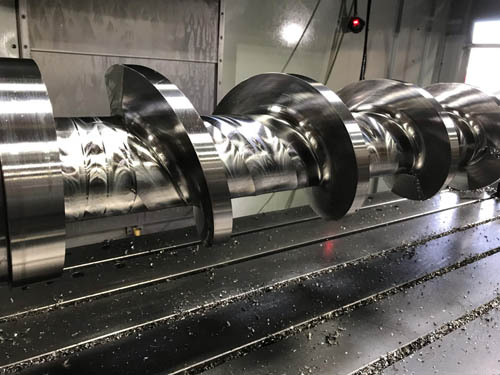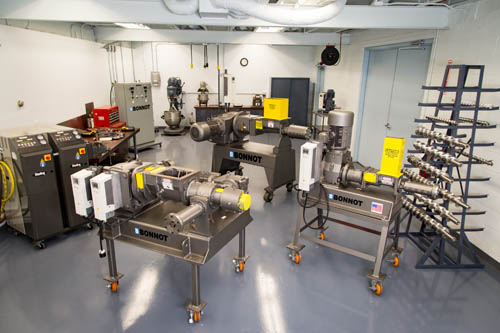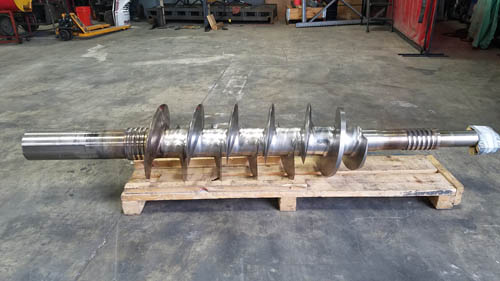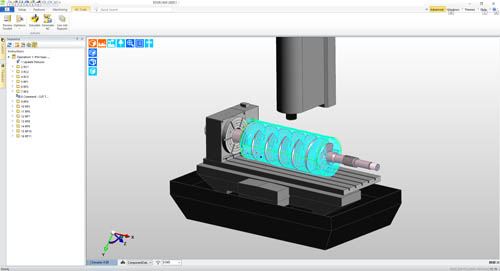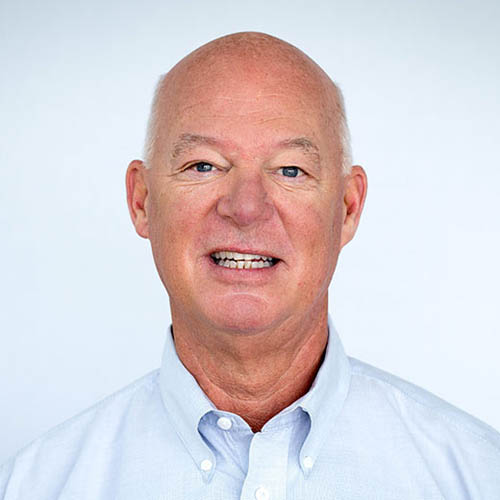Custom processing-equipment manufacturer The Bonnot Company uses EDGECAM to manufacture complex screw geometries and state-of-the-art machinery
Increasing efficiency is a must for any manufacturer, but The Bonnot Company has had more practice than most in harnessing the power of technology over the course of 128 years in business.
Based in Akron, Ohio, The Bonnot Company offers comprehensive design, engineering and manufacturing services, and is one of the world’s foremost suppliers of processing equipment across multiple industries.
“We design, engineer and manufacture extruders, feeders, cutters, and other types of custom processing equipment,” said President George Bain of The Bonnot Company. “We specialize in the custom design and manufacturing of equipment that fulfills very specific needs to solve problems that our customers face.”
As the company has been in business since 1891, it serves a fair amount of legacy customers for whom it performs upgrades on existing equipment. “We’re able to take older machinery and improve on its design for modern challenges,” Bain said.
One such change was made in 2015, when Bonnot implemented the EDGECAM computer-aided-manufacturing (CAM) system to better meet modern manufacturing challenges — particularly with the production of its augers, or screws. The company had previously adopted a different CAM solution, but found that it could not fulfill its increasingly complex programming and machining needs.
“When we brought in our first piece of CNC equipment 10 years ago, we were doing more hand-programming at the machine for one-off parts,” Bain said.
Notable efficiency gains have been made since the implementation of EDGECAM, including a 50 percent reduction in machining time for one complex and expensive legacy part made from a forging and turned in four axes.
“We have been able to reduce a significant amount of time on these parts, and the reason was that before EDGECAM we had to look at each individual line of code to make sure we weren’t crashing tools and scrapping parts. With EDGECAM verification, we are able to gracefully fast-track this process through its visual simulation.”
The knowledge and proficiency shared in training by Applications Engineer Bruce King of EDGECAM set Bonnot down the right “tool-path.” The company was able to reduce milling time from 240 hours to 160 hours on a feed screw for the Bonnot Rubber Bale Feeder.
The 1,200-pound screw begins as a forging and undergoes rough turning, milling and polishing operations before it’s complete. The part, which has an 18-inch outer diameter, is 102 inches in length, and takes more than 400 hours to produce.
Bonnot management challenged the company’s manufacturing personnel to decrease the milling time for the feed screw, and one of the most significant improvements was achieved with the help of the EDGECAM team, which worked with Bonnot to streamline the geometry of the original screw design. The company also worked with Technical Specialist Walt Satterfield of SECO Tools to find more efficient tooling solutions.
“Once the new screw geometry was established and we were supplied with a new arsenal of SECO tooling, we revisited the existing 240-hour program,” said CNC Programmer/Production Engineer Calib Willis of Bonnot. “Originally, there were separate program operations: roughing, semi-roughing, and finishing. We were able to optimize our cutting parameters and combine the multiple program operations into one semi-roughing operation.”
Once the new toolpath was in place, Bonnot used EDGECAM to verify the toolpath via simulation.
“The simulation’s run was accurate and gave us peace of mind prior to running the part,” said Plant Manager Kris Smith. “When you include the turning, milling and polishing operations, the total cycle time reaches 400-plus hours. So, reducing the milling time by 80 hours had a significant impact on the total cost of the part and has led to a more profitable part for us.”
Bain credits the initiative and “willingness to think outside of the box” demonstrated by Bonnot’s manufacturing team for the gain in profitability, in addition to the work and expertise of both EDGECAM and Seco Tools personnel.
“Reducing this amount of cycle time only happens when everyone is willing to help and truly solve a problem. The learning surrounding this specific part has carried over to many other parts that have long milling cycles, and has furthered Bonnot’s manufacturing efficiency and profitability,” Bain said.
Specialized cutting strategies in EDGECAM are used to address specific types of machining needs, which helps to simplify the generation of complex g-code. The flexibility of the solution ensures that users can choose between automatically applying toolpath or generating toolpath manually by selecting features and surfaces to be machined. The ability to approach jobs with a mixture of customized programming processes and specialized strategies comes in handy for producing the company’s range of roughly 20 different complex screw geometries.
The Bonnot Company uses the SOLIDWORKS® computer-aided-design (CAD) solution, by Dassault Systèmes, to design its parts, and easily imports solid models generated by the system into EDGECAM. As EDGECAM does not require a translator to read CAD data, the solution delivers error-free file import, ensuring that designs will not require additional manipulation before programming can begin.
The company performs both milling and turning, and mills in up to five axes; among its machinery are a Haas VF-7 vertical machining center, and two Haas VF-4 vertical machining centers.
Designed to automatically apply the most efficient toolpath for both features and surfaces, EDGECAM utilizes the Waveform machining strategy and trochoidal toolpath to avoid full-width cuts. Designed to generate smooth toolpath, Waveform has been developed to eliminate spikes in tool load and maintain consistent chip thickness. Easier than traditional cutting strategies on both machinery and cutting tools, Waveform toolpath extends tool life by maintaining constant engagement with the material.
“From my position, I always would like to know how long the machining is going to take and how much risk we’re mitigating — and what the finished part is going to look like,” Bain said. “We’re always trying to improve upon the time, the surface finish, and the types of finish.”
EDGECAM offers the rest machining strategy to efficiently machine areas that require consecutively smaller cutting tools to access material left behind after a roughing operation. Larger tools are used to remove the majority of the material during roughing, followed by as many smaller tools as needed to remove the rest of the material.
“We have a lot of different passes that will be a roughing pass on an end mill and go back in with a smaller end mill. The unique angles that we have to get into are very operation dependent,” Bain said. “We also have a lot of polishing that needs to be done, and we’ll make that decision whether to use a finishing path or the polisher.”
The right combination of machinery, tooling, software, and technical expertise has helped the company to gain efficiencies and remain competitive in the face of evolving demands.
“We have some very unique parts, and a lot of one-offs with a very high dollar value. A lot of them are done manually because the toolpath is very complex,” Bain said. “For the last four years, we’ve used EDGECAM not just for screws, but for castings and a very diverse group of materials, billets and fabrications — and it really runs the gamut with the amount of material construction. EDGECAM is very user friendly, and we’ve been super happy.”About the company
Name: The Bonnot Company
Website: www.thebonnotco.com
Business: Design, engineering and manufacturing services, and supplier of processing equipment for multiple industries
Key benefits achieved
- Greater ability to meet increasingly complex demands
- Significant decrease in production time
- Increased peace of mind with toolpath simulation and verification











